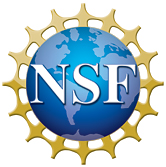Department
Great Lakes
The Great Lakes collectively constitute the largest liquid freshwater environment on the planet. While freshwater environments are known to be large sources and sinks of greenhouse gases to and from the atmosphere, relatively few measurements have been made across this enormous freshwater environment. Our initial goals for this project are to establish (1) the analytical methods and (2) the background data for greenhouse gas distributions and fluxes across the entire Great Lake system. We began during the summer and fall of 2016 validating the measurement techniques and using them to measure methane distributions across Lake Ontario, Lake Michigan, and Lake Superior using the R/V Blue Heron and R/V Madtom. In only one field season so far, I'm overwhelmed by the amount of data we were able to collect covering such a large region, and this is thanks to our sources of funding (NSF and the Univ. of Rochester) as well as some outstanding graduate and undergraduate students: (in alphabetical order) Amy Eisenstadt, Fenix Garcia-Tigreros Kodovska, Sawyer Johnson, Mihai Leonte, Colin McCormack, Katy Sparrow, Nicola Wiseman, Eric Yarmoff, and Ben Young.
SELECT PUBLICATIONS
- Joung, D.-J., M. Leonte, and J. D. Kessler (2019). Methane sources in the waters of Lake Michigan and Lake Superior as revealed by natural radiocarbon measurements. Geophysical Research Letters, 46, 5436–5444. https://doi.org/10.1029/2019GL082531
“Any opinions, findings, and conclusions or recommendations expressed in this material are those of the author(s) and do not necessarily reflect the views of the National Science Foundation."











